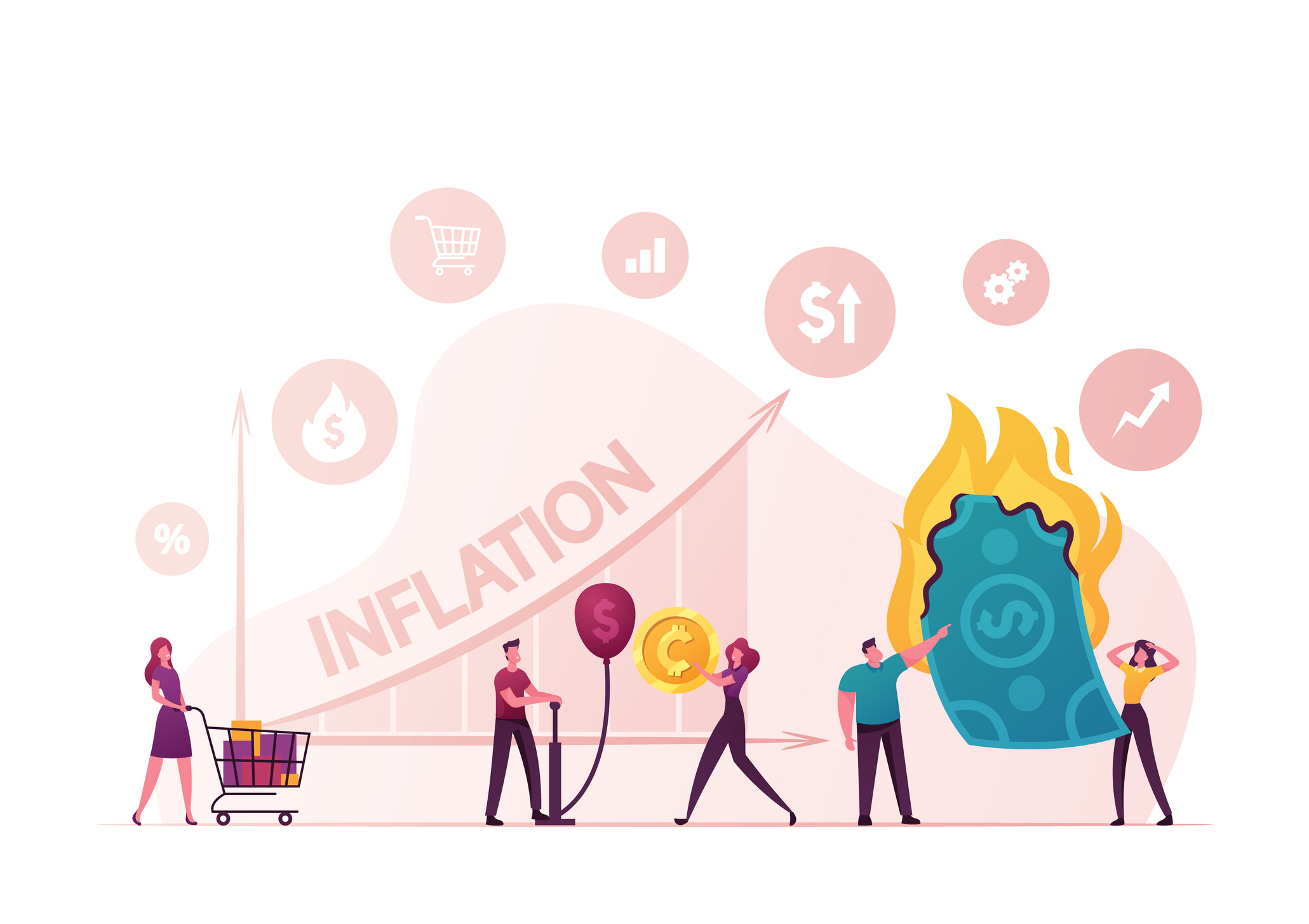Trillions of dollars of unprecedented stimulus, along with the Fed’s commitment to expansionary policy, could cause rapid inflation if there’s a sharp economic recovery this year. There are already signs that this process is in motion — manufacturing activity hit its highest level since the 1980s, according to the ISM manufacturing purchasing managers index. That’s fueling rising prices for inputs such as raw materials and labor.
It seems likely that the dollar will lose buying power as the economy reopens, and high inflation rates will affect everyone’s financial plans. This is especially true for retirees. If your investments aren’t set up to handle inflation, it might be time to consider slightly adjusting your strategy.

Image source: Getty Images.
Accommodative monetary policy and inflation
The Fed has repeatedly indicated its dedication to maintaining low interest rates until 2024, most recently as the March 17 FOMC statement. That means that the central bank is far more concerned with the risk of high unemployment than high inflation. It is keeping more cash in the economy, encouraging consumers to spend, and enabling businesses to expand and hire people.
That sounds fine at first glance, but the massive fiscal stimulus spending combined with a rebound from pandemic restrictions could set off a chain of events that quickly reduces the dollar’s buying power.
Extra cash in consumers’ hands gets spent, and prices can rise with excess demand. Companies start hiring from a mostly stable supply pool of employees, and that bids up wages as labor is in higher demand. Higher wages increase the cost of doing business, which necessitates higher pricing for many goods and services. Consumers who are riding extra cash, stable employment, and low rates are happy to accept rising prices.
This whole process snowballs and reinforces itself until some other economic force disrupts the expansion. The Fed appears comfortable with its ability to smooth the whole process by raising rates as conditions improve, but there could be some unwanted consequences if that chain reaction unfolds too quickly.
Who’s at risk?
Unfortunately for many people, such as retirees or “unskilled” labor, they won’t feel the benefits of rising wages or a business suddenly pulling in higher sales. Even worse, they will be negatively affected by the rising cost of living. Food, housing, gas, clothing, and electronics will all get more expensive, but those people won’t enjoy proportionate increases in cash flows.
The consumer price index (CPI), a common measurement of inflation, was only up 1.7% year over year in February. However, grocery prices increased 3.5% over the same period. People on smaller budgets will bear a heavier burden.
Retirees usually hold large amounts of cash, bonds, and other low-growth, low-volatility assets. If you’re retired, you can’t just radically change your allocation and incur more risk. However, there are some modest adjustments that could be made to limit the effects of inflation.
How to manage inflation
One great way to manage inflation is to hold growth assets, such as stocks. Share prices should rise along with other prices in the economy and corporate earnings, so holding stocks is a great way to hedge against a depreciating dollar.
You should make sure that your investment portfolio has the appropriate allocation of stocks and bonds. This is different for everyone, and the ideal allocation is based on age, time horizon, and risk tolerance.
Younger people who have a high tolerance for volatility can hold more stocks, potentially even 100% of their allocation. They are in great shape to ride out a period of high inflation. Retirees need to have some bond exposure, but they should be sure to retain some stocks too. Dedicating a portion of your investment account to stable, high-quality stocks can create a more balanced plan.
There are ways to reduce inflation risk in bond portfolios, as well. Investors can opt for Treasury Inflation-Protected Securities (TIPS), which adjust their payouts as the CPI changes. However, TIPS typically provide even lower rates than regular Treasuries at issue for that feature.
Investors can also hold bond portfolios with staggered maturity dates and a relatively high number of short-term bonds. Long-term bonds, such as those that mature more than 10 years in the future, are affected more heavily by inflation. Holding too many of them can create some real issues.
With the threat of inflation looming, investors need to retain a long-term view while making some slight short-term adjustments. Don’t react emotionally if you get caught off guard by predictable macroeconomic forces. Set your portfolio up the right way, ride out the potential storm that’s coming, and your financial plan should be okay.
10 stocks we like better than Walmart
When investing geniuses David and Tom Gardner have an investing tip, it can pay to listen. After all, the newsletter they have run for over a decade, Motley Fool Stock Advisor, has tripled the market.*
David and Tom just revealed what they believe are the ten best stocks for investors to buy right now… and Walmart wasn’t one of them! That’s right — they think these 10 stocks are even better buys.
Stock Advisor returns as of 2/1/20
The Motley Fool has a disclosure policy.






